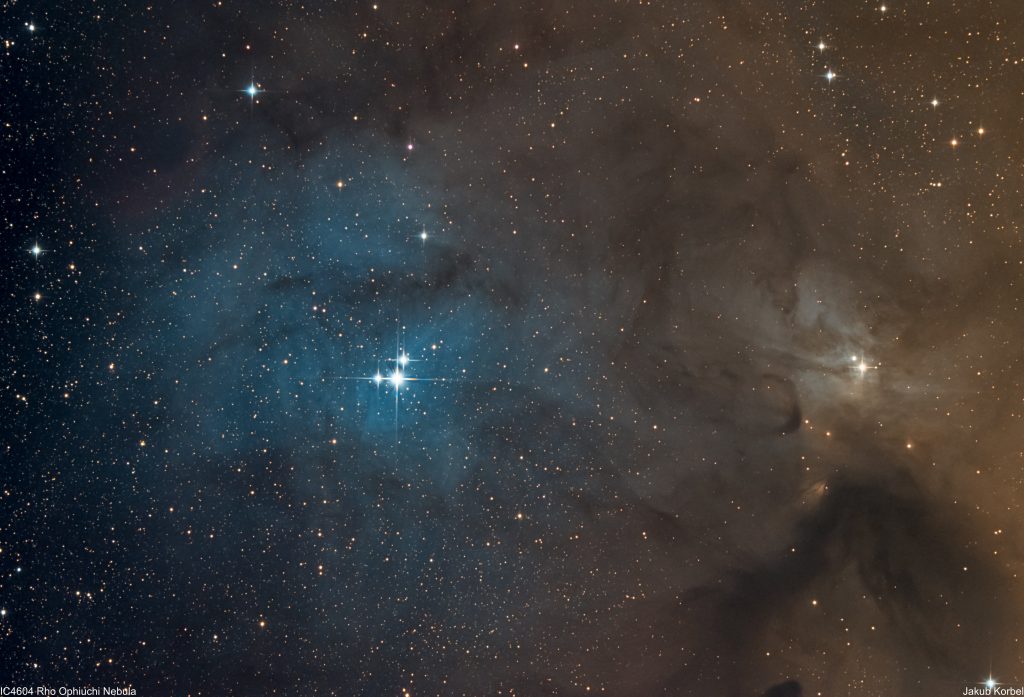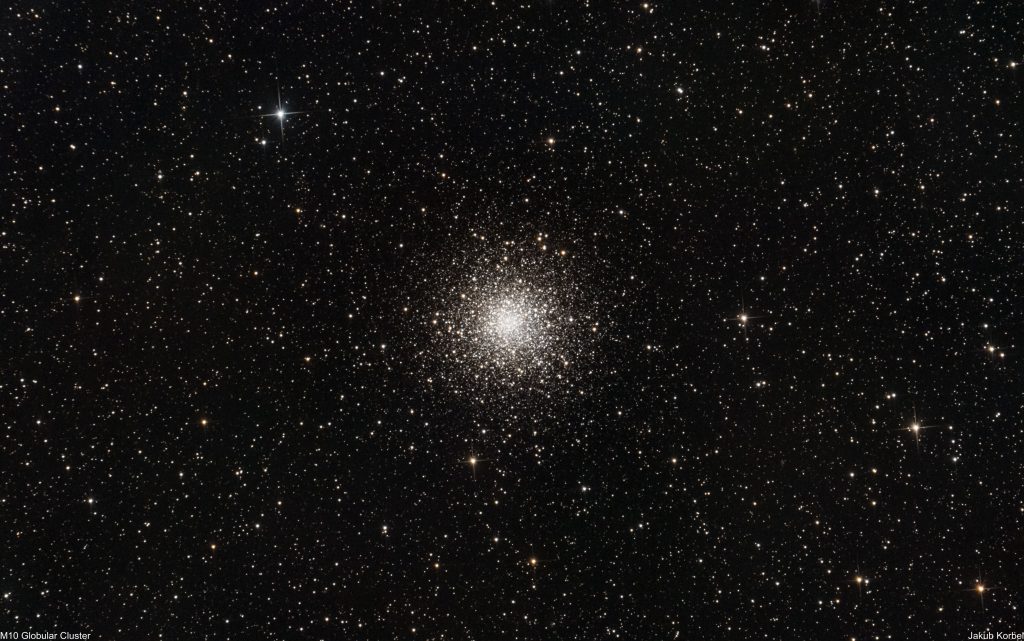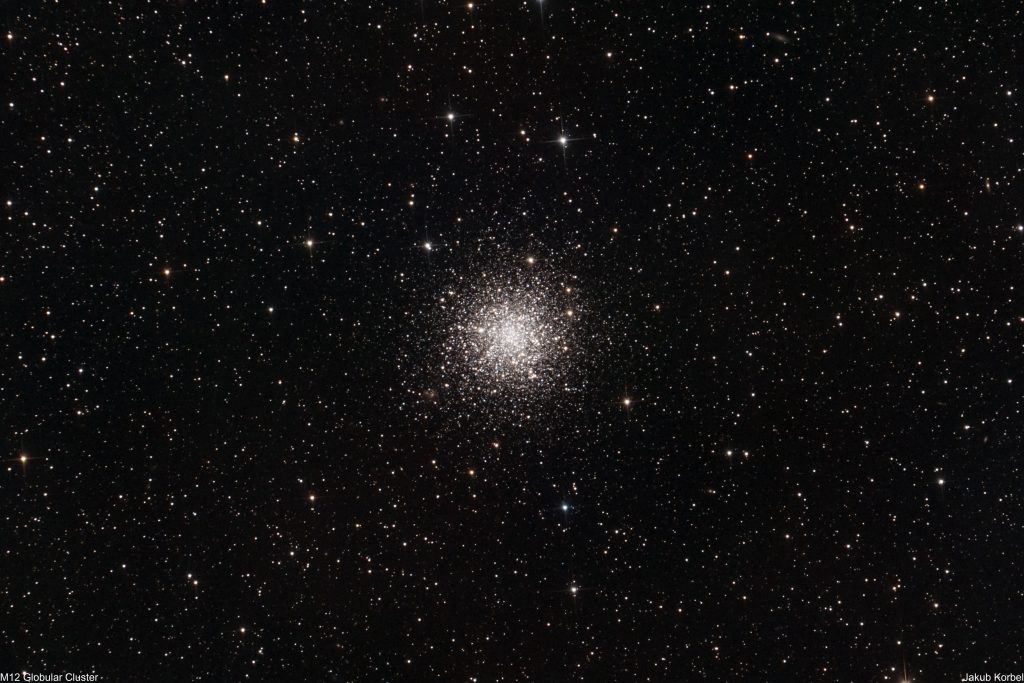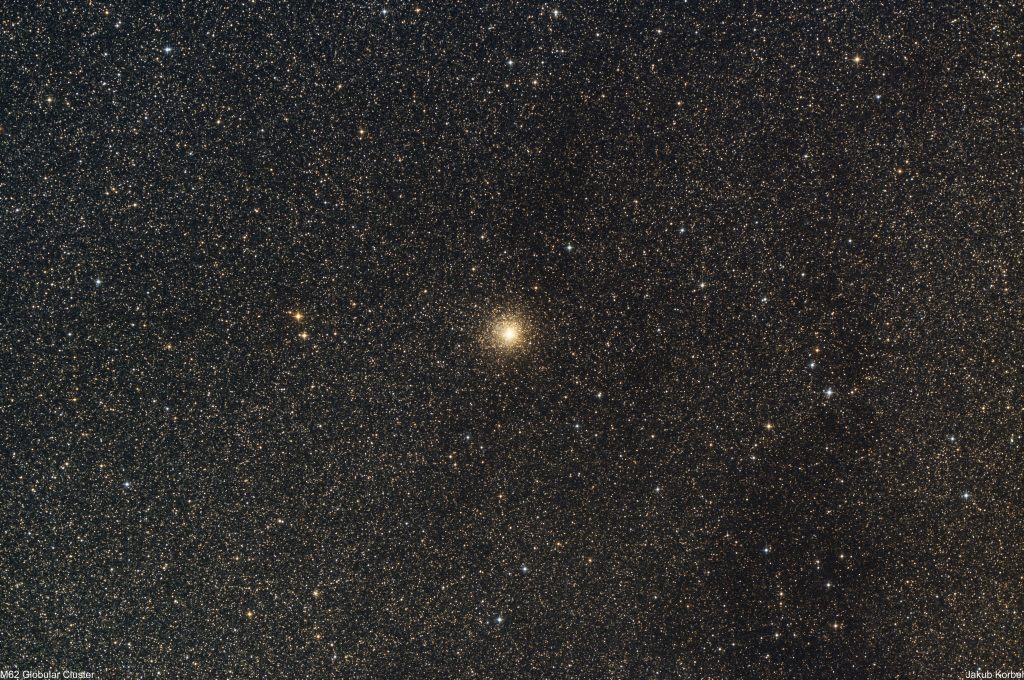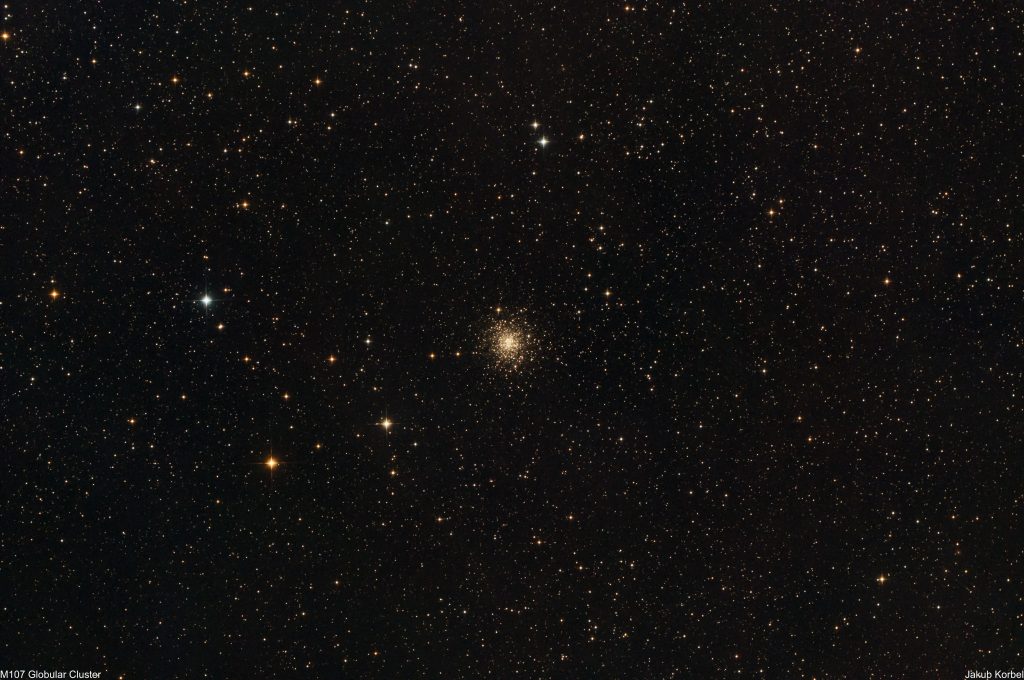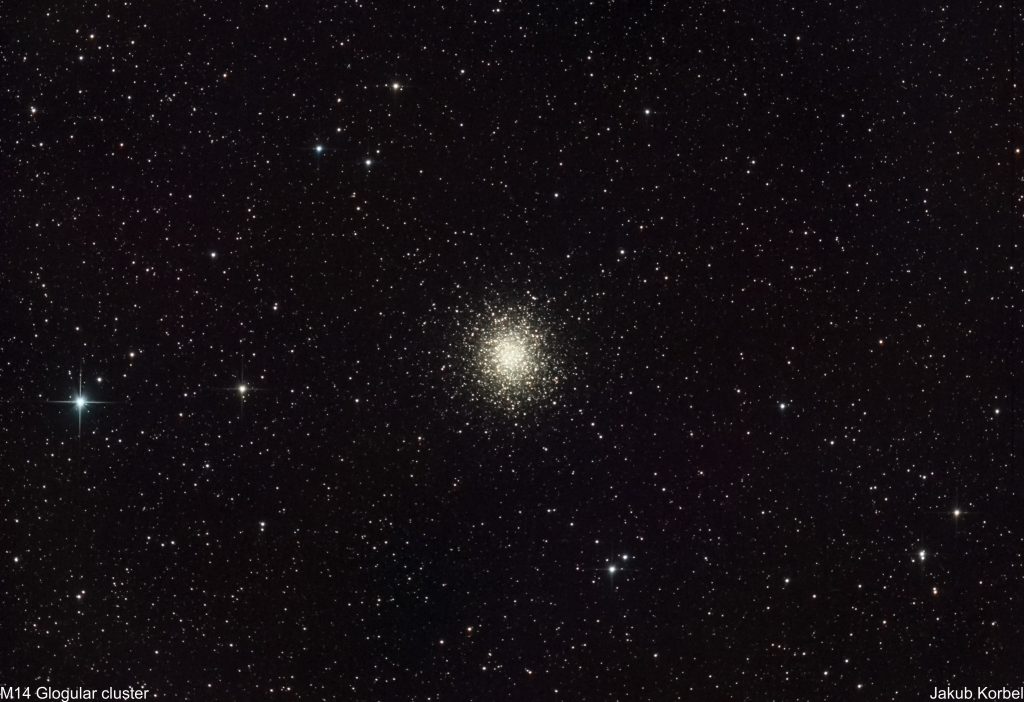Rho Ophiuchi is in my opinion the most beautiful assembly of the nebulae in the universe. Blue, red, and orange colors are combined to create this magnificent cloud complex. The dominant yellow star Antares (Alpha Scorpii) is a red supergiant, one of the largest visible stars. The star Alniyat (Sigma Scorpii) is surrounded by ionized hydrogen gas. Between these two stars is the M4 globular cluster, which I captured on Fuerteventura. The blue nebula is Rho Ophiuchi, also captured by me earlier.
In order to capture the whole beauty, one has to use a relatively short focal length (I used 180 mm), combined with a large sensor area (I used full frame 36×24 mm), and take the shots at a very dark location. This was my primary target during our trip to Crete 2021 and I am very happy that I finally got it framed. However, there is another beautiful nebula called Blue Horsehead in the visual vicinity and if I would turn the camera 90°, I would manage to capture it. So, there is a target for my next expedition.
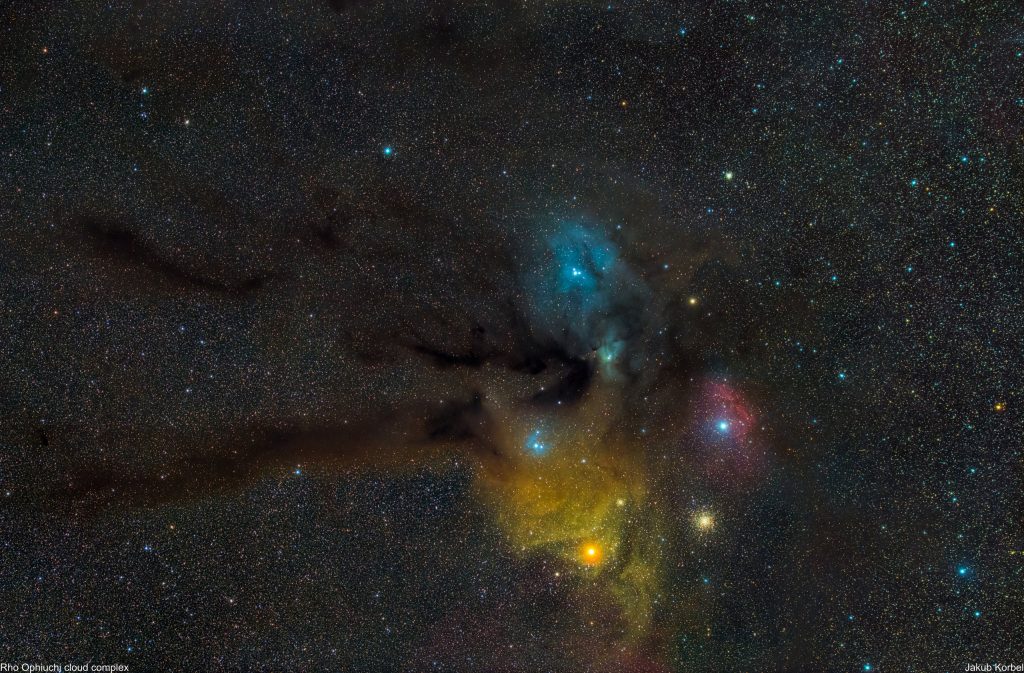
Technical details:
| Lens | Askar FMA180 F4.5 |
| Camera | Canon EOS 6Da |
| Mount | iOptron Skyguider Pro |
| Exposure | 38x120s, ISO 1600 |
| Date | 2021-07-07 |

